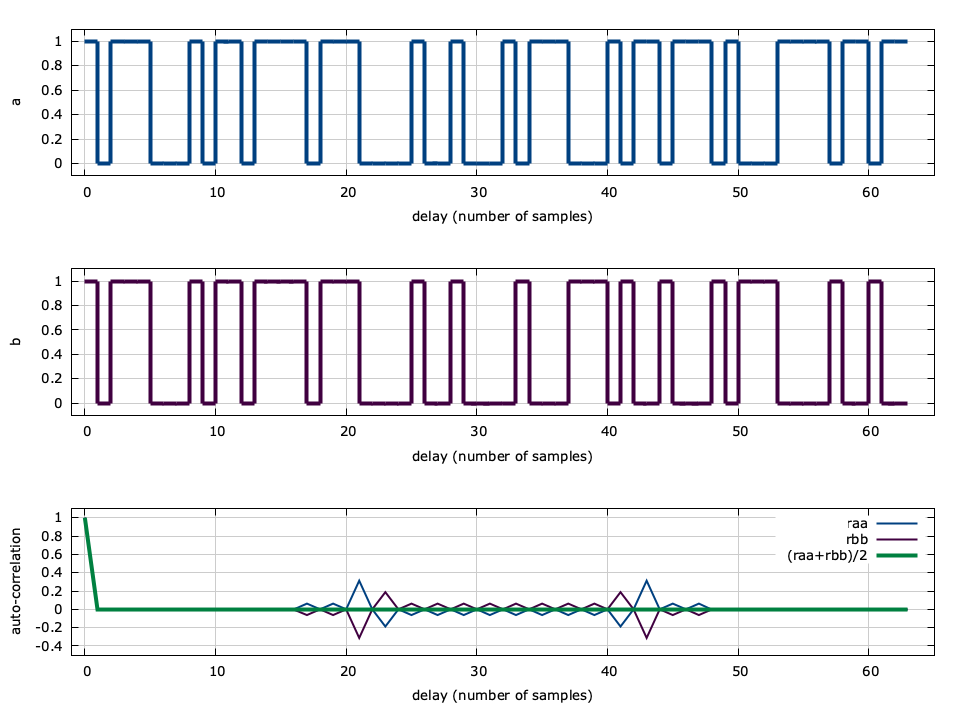Complementary Codes
Keywords: complementary codes
In addition to maximal-length sequences, liquid also implements complementary codes: P/N sequence pairs which have similar properties to m-sequences. A complementary code pair is one in which the sum of individual auto-correlations is identically zero for all delays except for the zero-delay which provides an auto-correlation of unity. The two codes \(\vec{a}\) and \(\vec{b}\) are generated recursively as
$$ \vec{a}_{k+1} = \left[ \vec{a}_k \,\,\, \vec{b}_k \right] $$ $$ \vec{b}_{k+1} = \left[ \vec{a}_k \,\,\, \bar{\vec{b}}_k \right] $$where \([\cdot,\cdot]\) represents concatenation and\(\bar{(\cdot)}\) denotes a binary inversion.[ref:tab-sequence-ccodes] shows the first several iterations of the sequence. Notice that the sequence length doubles for each iteration, and that (with the exception of \(k=0\) ) the first half of \(\vec{a}_k\) and \(\vec{b}_k\) are identical.[ref:fig-sequence-ccodes] shows that the auto-correlation of the two sequences is non-zero for delays other than zero, but that they indeed do sum to zero.
Table [tab-sequence-ccodes]. Default complementary codes in liquid
| Iteration | \(\vec{a}\) | \(\vec{b}\) |
| 1 | 1 | 0 |
| 2 | 10 | 11 |
| 4 | 1011 | 1000 |
| 8 | 10111000 | 10110111 |
| 16 | 10111000 10110111 | 10111000 01001000 |
| 32 | 10111000 10110111 10111000 01001000 | 10111000 10110111 01000111 10110111 |
| 64 | 10111000 10110111 10111000 01001000 10111000 10110111 01000111 10110111 | 10111000 10110111 10111000 01001000 01000111 01001000 10111000 01001000 |
